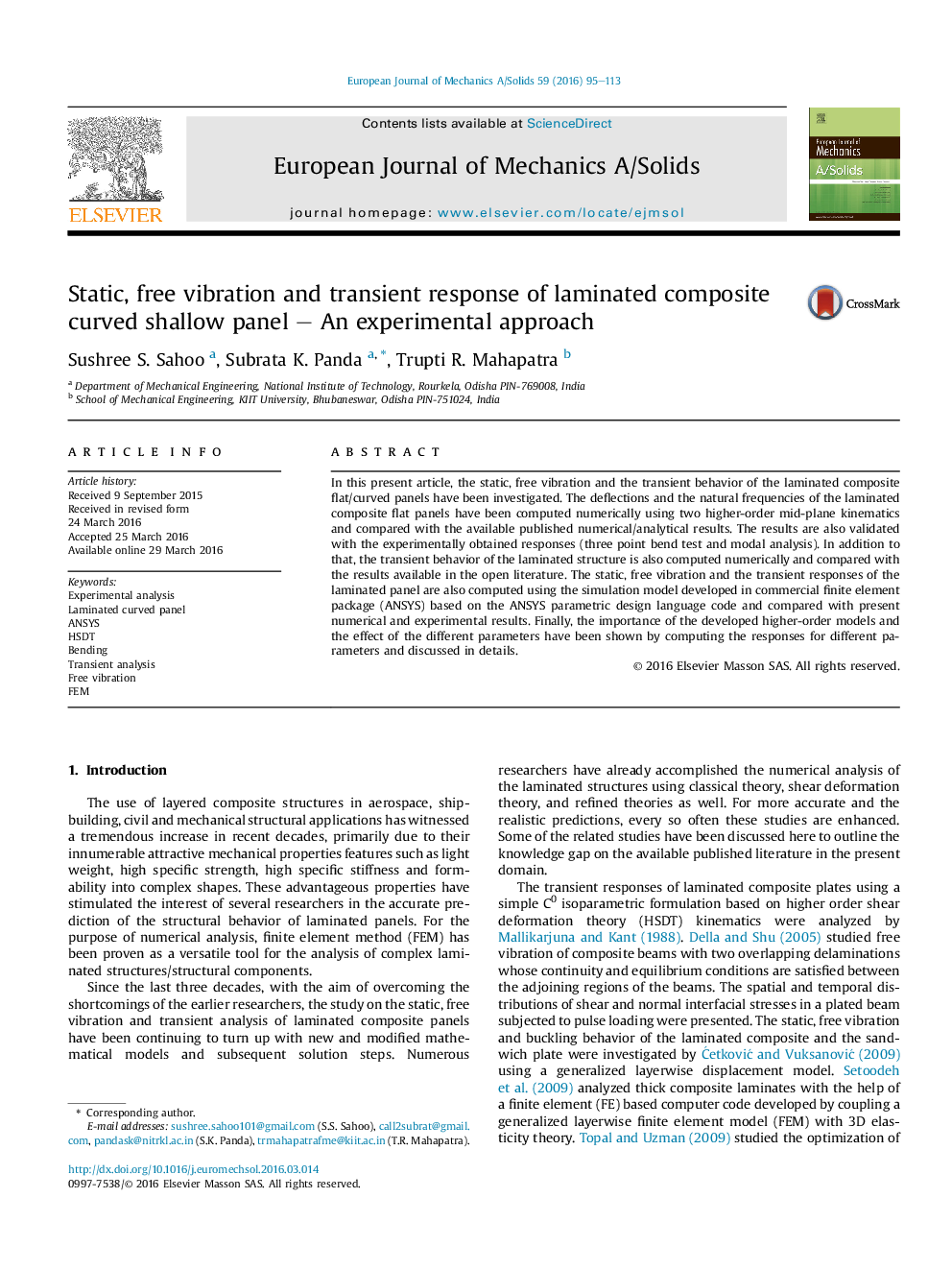| Article ID | Journal | Published Year | Pages | File Type |
|---|---|---|---|---|
| 774604 | European Journal of Mechanics - A/Solids | 2016 | 19 Pages |
•The static and transient responses of laminated composite panel have been computed using different shear deformation theories.•The results are also computed with the help of a simulation model developed in ANSYS and finally validated by comparing these responses with those published and experimental results.•The necessity of the higher-order model for the analysis of laminated composite is underlined by solving wide variety of examples.
In this present article, the static, free vibration and the transient behavior of the laminated composite flat/curved panels have been investigated. The deflections and the natural frequencies of the laminated composite flat panels have been computed numerically using two higher-order mid-plane kinematics and compared with the available published numerical/analytical results. The results are also validated with the experimentally obtained responses (three point bend test and modal analysis). In addition to that, the transient behavior of the laminated structure is also computed numerically and compared with the results available in the open literature. The static, free vibration and the transient responses of the laminated panel are also computed using the simulation model developed in commercial finite element package (ANSYS) based on the ANSYS parametric design language code and compared with present numerical and experimental results. Finally, the importance of the developed higher-order models and the effect of the different parameters have been shown by computing the responses for different parameters and discussed in details.
Graphical abstractIn this article the free vibration, static and transient behavior of laminated Glass/Epoxy composite panel is analyzed based on two higher-order theories and simulation model. The necessity of the higher-order model for the laminated structure is highlighted by comparing the responses with corresponding experimental analysis i.e., three point bend test and modal analysis for the static and free vibration cases.Figure optionsDownload full-size imageDownload as PowerPoint slide
